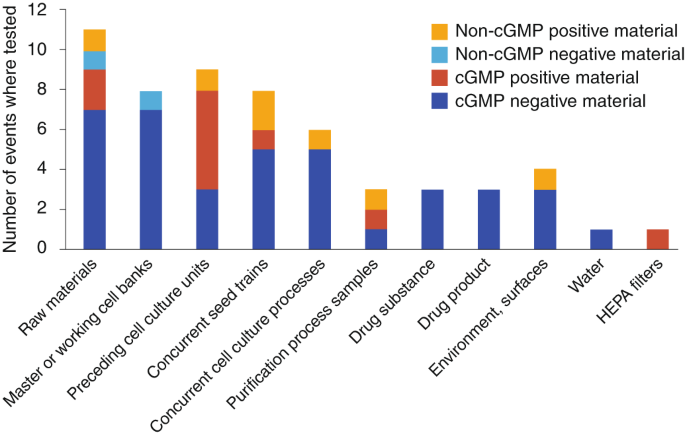4 Types Of Contamination / What Are The 4 Types Of Food Contamination Food Safety Guide - Different types of food contamination biological contamination.
4 Types Of Contamination / What Are The 4 Types Of Food Contamination Food Safety Guide - Different types of food contamination biological contamination.. They are also referred to as microbes or microbiological contaminants. There are three types of food contamination: It's important to know how food can become contaminated so that you can protect against it. Sometimes, by the time a food causes illness, it has been mishandled in several ways along the food production chain. Feared contaminants are not simply limited to dirt, germs, and viruses, but may include such things as blood, household chemicals, sticky substances or residues, people who appear unclean or unkempt, and various types of insects or animals.
The term pollution refers to the act of contaminating one's environment by introducing certain hazardous contaminants that disturb the ecosystem and directly or indirectly affect the living organisms of that ecosystem. The main reasons of contamination due to facility issues include: Inadequate filth and pest controls; No one wants to drink water that is contaminated. Particulate activity is an internal hazard, because it can be inhaled.

Biological contaminants are organisms in water.
However, the type that can cause real havoc in a food business is seldom spoken about—microbiological contamination. The four types of contamination. In each type, bacteria are transferred from a contaminated source to uncontaminated food. Because of the potential hazards, decontamination using chemicals should be done only if recommended by an industrial hygienist or other qualified health professional. The main reasons of contamination due to facility issues include: Contamination can occur in a refrigerator if meat juices get on items that will be eaten raw. Not all intentional contamination is harmful. Sometimes, by the time a food causes illness, it has been mishandled in several ways along the food production chain. Natural, accidental, and intentional… then i give examples if necessary. Inadequate filth and pest controls; Once contamination occurs, further mishandling, such as undercooking the food or leaving it out on the. Particulate activity is an internal hazard, because it can be inhaled. No one wants to drink water that is contaminated.
Respiratory illness and occasionally gastrointestinal illness. Contaminated food can have dire consequences for the person who eats it, and for the business who sold it. When harmful objects contaminate the food it leads to physical contamination. Allergic reactions are exaggerated sensitivities (hypersensitive reactions) that occur when your immune system responds abnormally to common. Air, water, and soil pollution are the three major types of pollution.

A leak in the holding containment would contaminate the product inside it;
This chapter covers several types of biological and chemical contamination. Beside particulate matter such as ions and molecules, the most common types of contamination are: It is surprising to know that when one talks about contamination, most of the time one refers to physical contamination or chemical contamination. Rough floors, walls, and ceilings Four types of contaminants that can be found in drinking water. Final ccl 4 microbial contaminants. Anything that is not water is a contaminant. Natural, accidental, and intentional… then i give examples if necessary. Respiratory illness and occasionally gastrointestinal illness. This article will examine the four main types of pollution and their causes. All foods are at risk of becoming contaminated, which increases the chance of the food making someone sick. Within the sciences, the word contamination can take on a variety of subtle differences in meaning, whether the contaminant is a solid or a liquid, as well as the variance of environment the contaminant is found to be in. The term pollution refers to the act of contaminating one's environment by introducing certain hazardous contaminants that disturb the ecosystem and directly or indirectly affect the living organisms of that ecosystem.
It is surprising to know that when one talks about contamination, most of the time one refers to physical contamination or chemical contamination. Allergists recognize four types of allergic reactions: In most cases, the presence of tiny amounts of foreign substances do not pose a health risk, but you should still pay attention to the content of your local. All foods are at risk of becoming contaminated, which increases the chance of the food making someone sick. The main reasons of contamination due to facility issues include:

Natural, accidental, and intentional… then i give examples if necessary.
Water, dilute acids, dilute bases, and organic solvents. Food safety in catering level 2 Air, water, and soil pollution are the three major types of pollution. Within the sciences, the word contamination can take on a variety of subtle differences in meaning, whether the contaminant is a solid or a liquid, as well as the variance of environment the contaminant is found to be in. Rough floors, walls, and ceilings Allergists recognize four types of allergic reactions: Staphylococcus these bacteria are found on the skin, in sores, infected eyes and in the nose, throat, saliva and bowel of humans. It's important to know how food can become contaminated so that you can protect against it. Cross contamination is possible when the unwanted matter is introduced or brought from one process to the next during manufacturing. Contamination can occur in a refrigerator if meat juices get on items that will be eaten raw. No one wants to drink water that is contaminated. All foods are at risk of becoming contaminated, which increases the chance of the food making someone sick. When harmful objects contaminate the food it leads to physical contamination.
Komentar
Posting Komentar